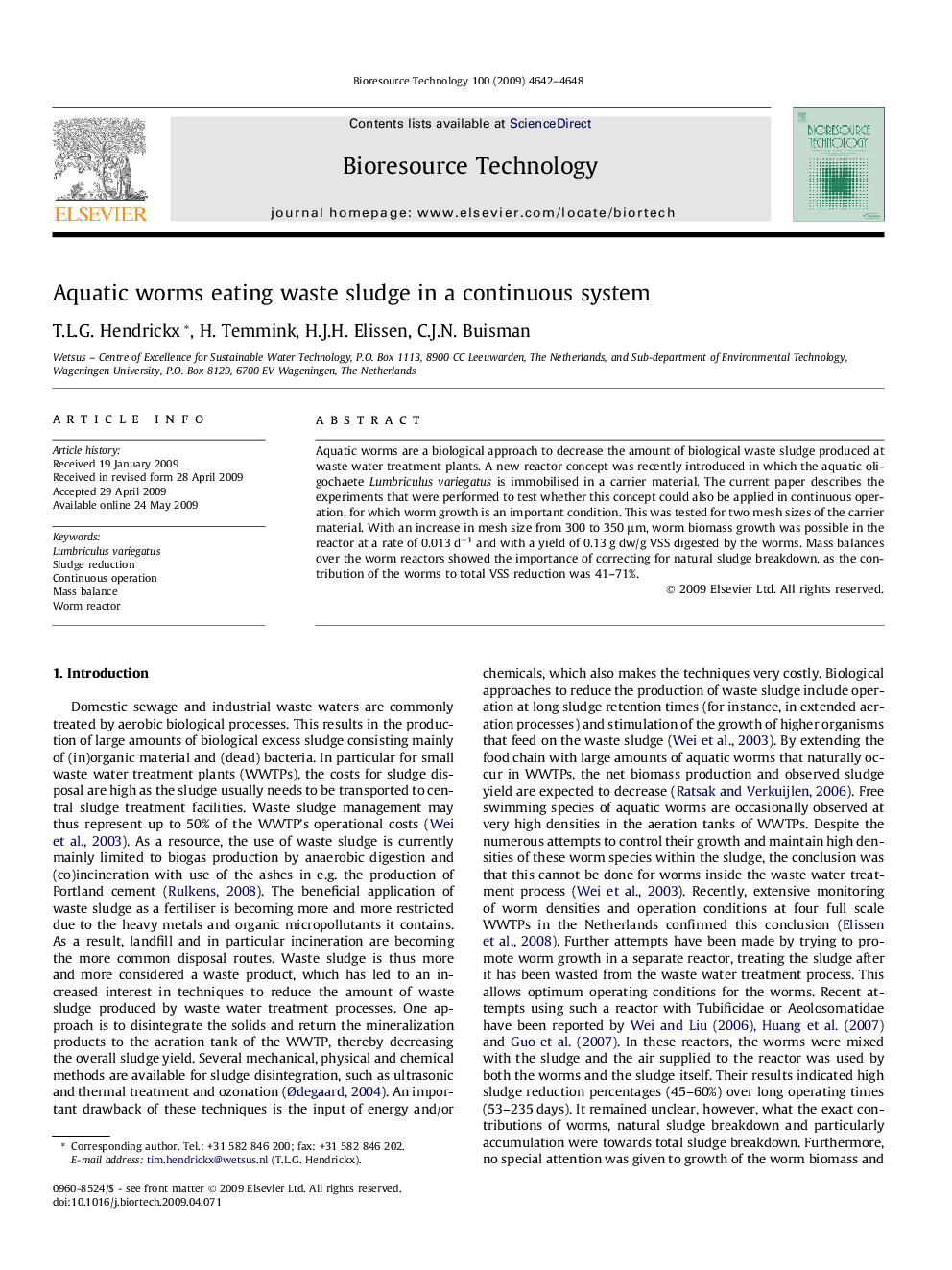| Article ID | Journal | Published Year | Pages | File Type |
|---|---|---|---|---|
| 683146 | Bioresource Technology | 2009 | 7 Pages |
Abstract
Aquatic worms are a biological approach to decrease the amount of biological waste sludge produced at waste water treatment plants. A new reactor concept was recently introduced in which the aquatic oligochaete Lumbriculus variegatus is immobilised in a carrier material. The current paper describes the experiments that were performed to test whether this concept could also be applied in continuous operation, for which worm growth is an important condition. This was tested for two mesh sizes of the carrier material. With an increase in mesh size from 300 to 350 μm, worm biomass growth was possible in the reactor at a rate of 0.013 dâ1 and with a yield of 0.13 g dw/g VSS digested by the worms. Mass balances over the worm reactors showed the importance of correcting for natural sludge breakdown, as the contribution of the worms to total VSS reduction was 41-71%.
Related Topics
Physical Sciences and Engineering
Chemical Engineering
Process Chemistry and Technology
Authors
T.L.G. Hendrickx, H. Temmink, H.J.H. Elissen, C.J.N. Buisman,
